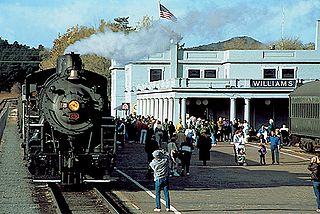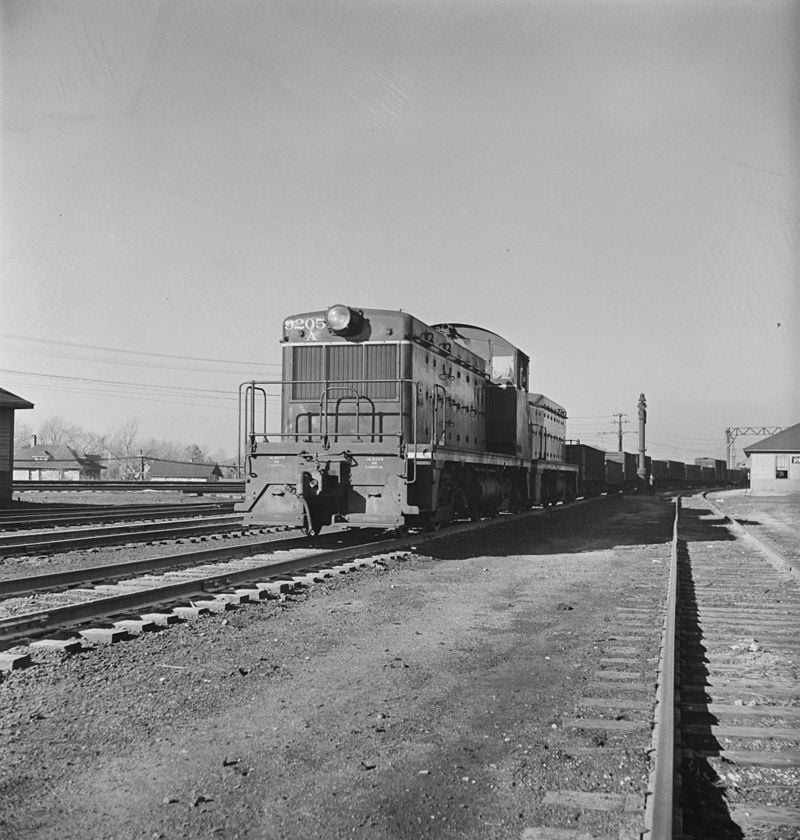There is a to-do astir, a dust-up if you prefer, in Pennsylvania’s Kutztown borough. It mostly has to do with one resident’s complaint directed at the neighbor, in this case, that neighbor being a railroad company, a section of whose track(s) lies in relative close proximity to the home the seemingly perturbed resident resides in.
But that doesn’t anywhere near begin to describe this Kutztown citizen’s gripe – not even. Based on the information I’ve been able to ascertain thus far (I’ve been in communication with both parties – borough resident Phila Back and Allentown and Auburn Railroad (A&A) President Michael Bast II) – learning both sides of the argument, train-locomotive idling in the vicinity near the train station where she lives, according to Back, not only is it impacting the air around and inside the property in question, such is also exacerbating an existing health condition: Back has asthma records show. Though a mild case of it, she has asthma nonetheless.
It is not like Back is asking, demanding her neighbor pull up spikes, ties and rail and get the you-know-what out of Dodge, as the expression goes. It’s apparent Back is seeking relief.
From what I understand, in one such request it was asked if in place of rail-borne-equipment-idling happening proximate to her home, this instead could be done at a more remote down-the-line location, presumably and preferably, one far enough away that any such diesel-engine-related emissions releases nary a problem to Back at her home would such present.

That being said, the railroad, it would appear, is a good neighbor as it specifically has to do with this issue.
So what steps, outside of those the A&A in this regard may have already implemented in an effort to address Back’s concerns, can be initiated in helping to bring a resolution relating to the matter(s) at hand and to the mutual satisfaction of the interested parties?
Please keep in mind the following are not suggestions and should in no way, shape or form be construed as such.
It just so happens …

… The Wine Train in Napa, California, converted at least one of its diesel-electric locomotives so that it can operate using compressed natural gas as fuel.
… On the Byron Bay Railway of Byron Bay, Australia, rebuilt were two passenger cars according to what I understand and via the placement of solar panels in the rail-conveyance roofs, these passenger carriages derive their power from the sun.
Now as for people who live within eyeshot of an active railway line as I have from time to time, windows and doors can be kept closed, the air conditioning and heating can be on, depending on what atmospheric conditions outside are present at the time. Aside from the rumble and/or railroad-wheel-related din of a passing train, be it a passenger or freight, I hardly even paid any mind.
At the end of the day, when I lived by the tracks, I felt I was a good neighbor and I believe the railroads that owned the respective sections of track abutting the apartments I resided in during those times, were likewise.
Story update:
On Nov. 23, 2018 I received formal statement addressing concerns raised by Ms. Back from the Allentown & Auburn Railroad, a tourist and freight-hauler in Pennsylvania.
In it, the railroad’s president, Michael Bast II wrote: “Our Engine 206 is an important part of railroading history in not only Pennsylvania, but in the entire country, and we are proud to be able to preserve it for the enjoyment of people of all ages,” he said. “With regard to Ms. Back’s concerns about its idling and exhaust, the A&A had already agreed to move the engine away from the station between runs and allow it to idle farther down the track away from her house. The engine cannot be turned off and on throughout an operating day, but we will do our best to minimize any inconvenience to Ms. Back.” Bast also noted that retrofitting an engine of 206’s age, if even possible, would destroy its heritage and be counter to railroading preservation efforts.
Adding to this, it was further emphasized: “We pride ourselves on being an organization with incredibly dedicated people who help preserve railroading history and provide old-fashioned entertainment for families and railfans,” said Bast. “We also strive to be supportive of Kutztown’s community, businesses, organizations and charities, and we have worked hand-in-hand with the community to bring people to visit the area. We also support various charities in Kutztown and beyond by raising money and promoting their work through our train rides. It’s important for us to be a positive force in the community as well as an organization dedicated to railroading heritage.”
(Editor’s Note: Gratitude is thus extended to both the Allentown & Auburn Railroad and Mr. Bast for providing formal comment which was received via emailed correspondence).
Image (upper): Jack Delano, United States Library of Congress‘s Prints and Photographs division
This post was last revised on May 30, 2020 @ 8:20 p.m. Pacific Daylight Time.
– Alan Kandel
